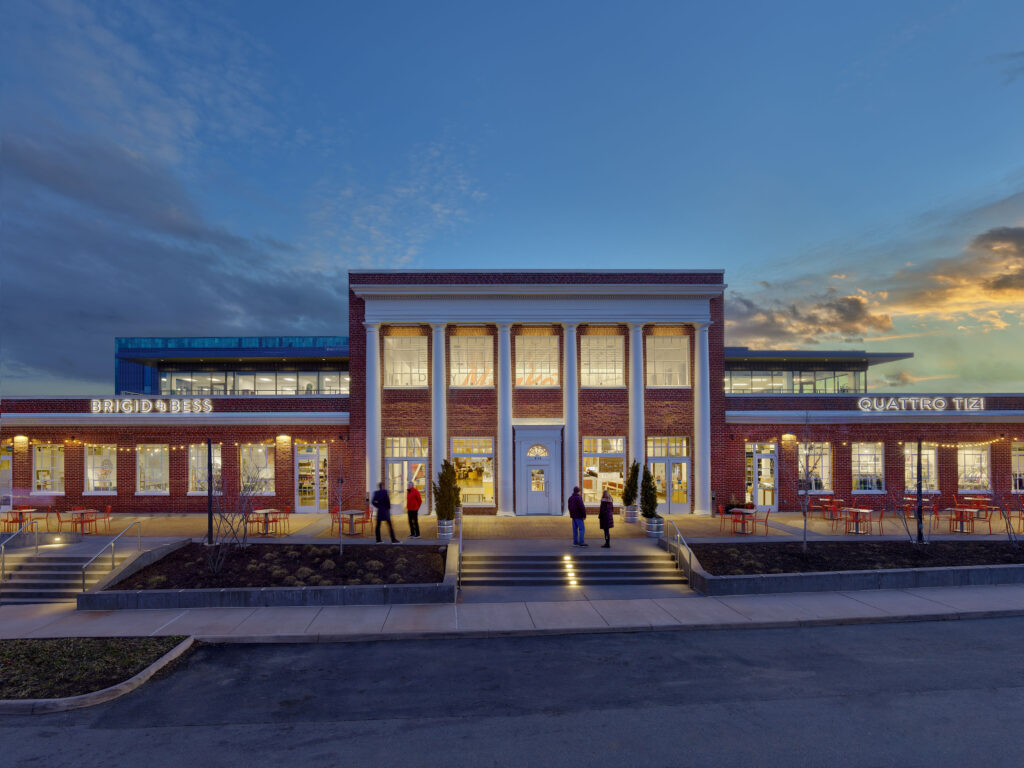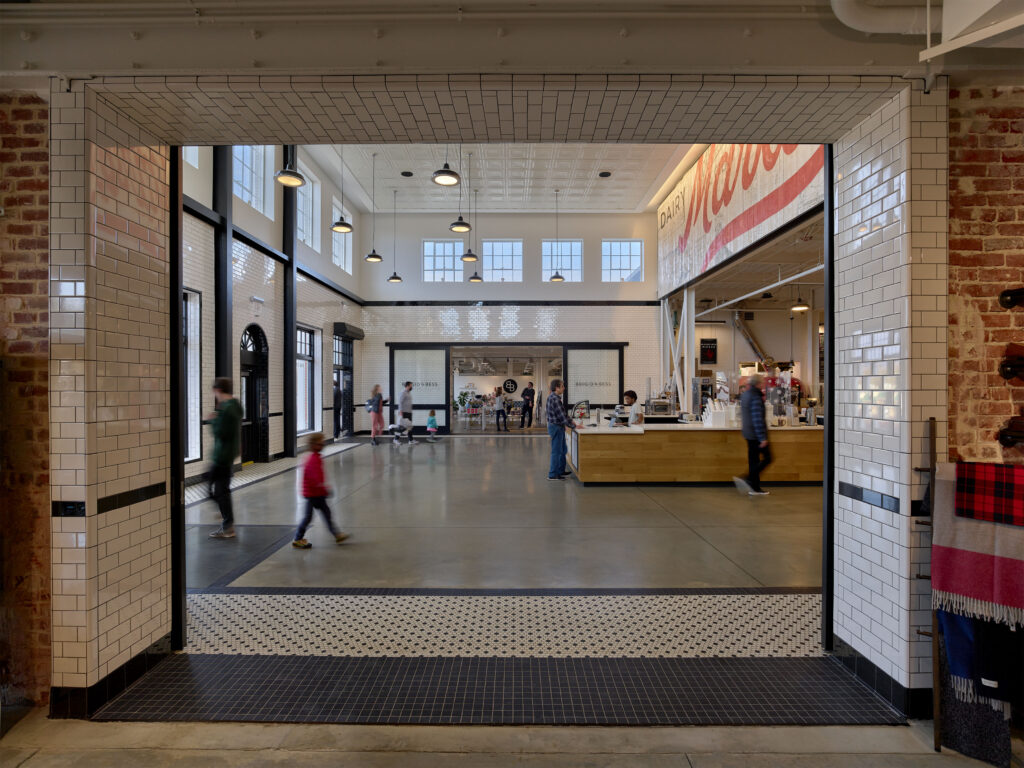Between the University of Virginia’s leafy main campus and downtown Charlottesville’s picture book pedestrian mall, the 10th and Page neighborhood has become a living case study for nearly 25 years in post-urban renewal revitalization. After the destruction of the predominantly African-American neighborhood Vinegar Hill in the 1960s, many of its residents reestablished themselves in and around 10th and Page, which has been a stronghold of Black homeownership and generational wealth for more than a century.

A central fixture of 10th & Page Neighborhood was the Monticello Dairy Building, a two-story brick building that housed the Monticello Ice Cream Company, which has roots dating back to 1912, started out as a one-room ice cream shop. As the company grew, it quickly became a fixture in the neighborhood as a place to gather and was known for festive holiday displays.
“The Monticello Dairy was an instrumental part of the fabric of the community,” said Lee Quill, FAIA, founding principal of Cunningham | Quill Architects, which completed a nearly-100,000 square foot renovation of the historic structure in 2021 to include new office and event space, as well as a food hall. “Part of what we wanted to do was make this a place for the community to come home to again, and to come back together—something it had lost after the dairy left,” says Quill.
Today, the Dairy Market is a prime example that adaptive reuse of historic buildings is critical to creating development opportunities that have a positive impact on the social and economic value in a neighborhood. The 33,000 square-foot food hall features start-up and established local vendors and the 53,000 square feet of Class-A office space supports regional small business owners. To date,18 merchant businesses now reside in the Dairy Market, of which 22 percent are women-owned and 33 percent are minority-owned.

Even before its designers put pencil to paper, they gathered as much input as possible from residents and community members, many of which have seen the site’s transformation over the years from local hub to underutilized resource.
“One of the main concerns we heard from the community is this idea of gentrification,” said Michael Day, AIA, principal at Cunningham | Quill. “What happens when you bring in new development? Will you push out the fabric that was there currently? We were very sensitive to that in terms of the scale of the building and the type of uses.
The project, which also achieved LEED Silver certification, included an addition of a contemporary office building that complements and doesn’t overpower the existing industrial market. Another priority of the project was pedestrian connectivity. The team strived to create a relationship between the project’s program and the street for a site that’s a median point between the university’s sprawling campus and the city’s thriving downtown — and visitors are welcomed by a pedestrian terrace on Grady Avenue just off the Preston Avenue thoroughfare.
“The front section of the street, where we have the outdoor plaza, is meant to be inviting,” said Day. “We created these indoor and outdoor spaces to allow people to freely move in and out of the building, but also around the building. There’s new sidewalks with new landscaping … It’s a network of streets.”
The Dairy Market is a prime example of the value design thinking can bring to sleepy commercial spaces that were once economic and social anchors. Adaptive reuse, as a design strategy, is about more than redevelopment. It’s about revitalization — economic, social, environmental, and urban — as a way to generate prosperity for the community today and in the long run.
“It’s an opportunity to look at historic buildings within neighborhoods and understand how [they] create a future for people to live, work, and have amenities within their neighborhood,” says Day. “We created the mixed-use that lets that equitability be fairly distributed across the community itself.”
Team Three is an editorial and creative consultancy based in Washington, D.C.
